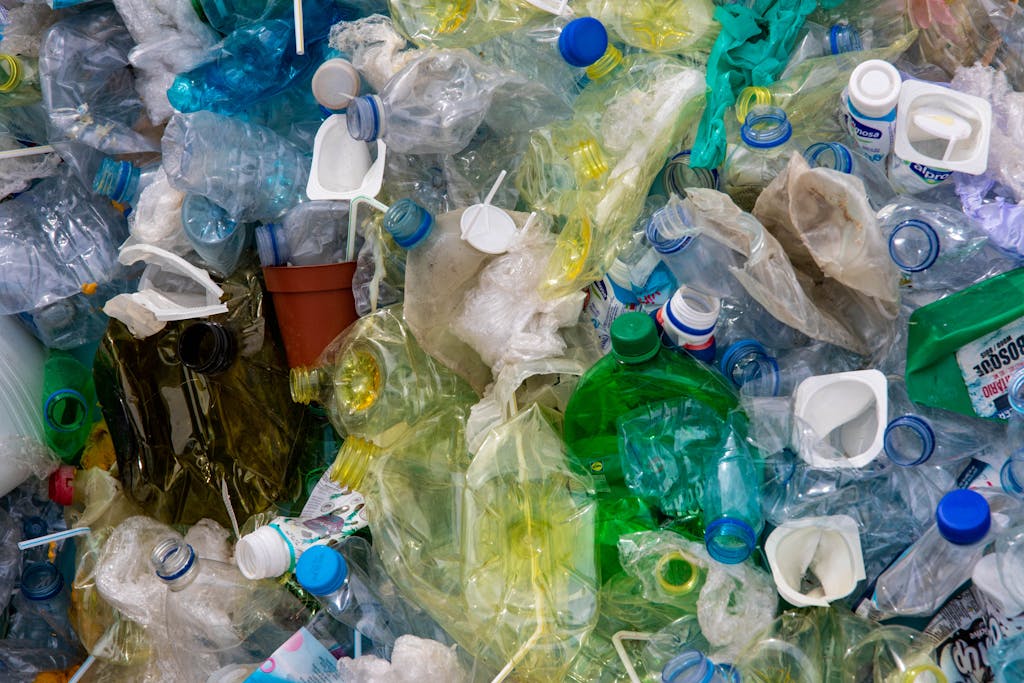Theme For World Earth Day 2024: Planet Vs Plastics
This year, the theme for World Earth Day 2024 is “Planet vs Plastics” emphasising the urgent need to confront the pervasive issue of plastic pollution and its detrimental effects on our environment and health. Monday 22nd April is fast approaching and as this is World Earth Day, I thought I’d share some of the information, tips and ideas for actionable steps we can take to combat plastic pollution and build a more sustainable future.
Understanding the Issue
Plastic pollution has reached alarming levels, with over 380 million tons of plastic produced annually worldwide. This exponential growth has resulted in widespread environmental degradation, as plastics accumulate in landfills, oceans, and ecosystems. The consequences are dire, posing threats to wildlife, marine life, and human health.

Plastics degrade into microplastics, releasing toxic chemicals into our food and water sources. This contamination cycle threatens the health of ecosystems and contributes to environmental degradation. Moreover, the production of plastics relies on petrochemicals, further exacerbating pollution and climate change.
The Urgency of Action
The urgency of addressing plastic pollution cannot be overstated. Immediate action is needed to mitigate its harmful effects and safeguard our planet’s health. The “Planet vs Plastics” campaign, led by EARTHDAY.ORG, calls for a 60% reduction in plastic production by 2040 and the rapid phase-out of single-use plastics by 2030.

To achieve these goals, concerted efforts are required on multiple fronts. Public awareness must be raised about the detrimental effects of plastic pollution on human health and the environment. Education and advocacy are essential for mobilising communities and galvanizing support for policy changes and sustainable practices.
Solutions and Strategies
Combating plastic pollution requires a multifaceted approach, encompassing individual actions, policy reform, and technological innovation. Individuals can make a difference by reducing their reliance on single-use plastics and opting for reusable alternatives. Supporting businesses that prioritize sustainability and eco-friendly practices can also drive systemic change.

Governments play a crucial role in enacting legislation to ban or restrict single-use plastics and promote recycling and waste management initiatives. International cooperation is vital for developing comprehensive strategies to address plastic pollution on a global scale.
Innovative technologies and materials offer promising solutions for building a plastic-free world. From biodegradable plastics to eco-friendly packaging solutions, research and development efforts are underway to find sustainable alternatives to traditional plastics. Investing in these technologies can accelerate progress towards a more environmentally friendly future.

Taking Action: What We Can Do?
As individuals, we all have a role to play in the fight against plastic pollution. By making conscious choices in our daily lives, such as reducing our plastic consumption, recycling responsibly, supporting sustainable businesses and rejecting fast fashion we can collectively make a meaningful impact. Every small action adds up to create positive change, and together, we can turn the tide against plastic pollution. We can also sign the Global Plastics Treaty calling on the United Nations and Governmental Organisations to commit seriously to reducing plastic pollution. Find out the ways you can take action by downloading the Earth Day Action Toolkit
Conclusion
On World Earth Day, let us heed the call to action and unite in the fight against plastic pollution. The theme of “Planet vs Plastics” reminds us of the urgent need to confront this pressing issue and protect our planet for future generations. By working together and taking decisive action, we can overcome this challenge and build a more sustainable future for all. Let’s rise to the occasion and join forces in the fight against plastic pollution. The time to act is now.








I must confess that I don’t do everything I can to reduce my use of plastic. We have made some changes, so I’m sure every little bit helps. Most of the time now, we have reusable cloth bags for groceries. I really like using these, because they are easier to pack the groceries and carry them into the house. Store cashiers love when customers use these cloth bags too.
We just came back from a trip to Colorado where they have outlawed the use of plastic bags in grocery stores. Only paper can be used. It’s ironic, because I can remember the push to move people away from paper bags to plastic bags in order to save the trees. Now, we are being moved back to paper bags.
You are so right – every little change makes a difference. It does seem ironic that places are returning to paper bags but I think everything seems to go through cycles.
I always think of my grandparents and how we are returning to how they lived and shopped post war, (Glass milk bottles and yoghurt pots, paper bags, reducing waste and recycling wherever possible) these were definitley eco-friendly approaches – a life before our throw-away society!
Thanks for your comments.
For many years I worked in the Signage Business here in the UK. Throughout the 1970s through to the beginning of the new century, colored acrylic was the medium of choice specified by most architects and designers. As shopping centers and out-of-town retail parks rapidly grew, so did the use of Perspex, Plexiglas, etc. A slow change started to evolve partly brought on by the awareness of plastic waste and partly by the insistence of town planners to phase out plastics. I am long retired from the business, but I do note on my travels that nowhere near as much plastic is on view above shopfronts. It takes time, but with determination, the goals can be reached.
Oh wow! That is so interesting! I had never thought of looking at shop signs to see which are plastic and which aren’t. I will be checking that out now. It’s good to hear that companies are moving in the right direction.
A family friend of ours used to be a signwriter many years ago (now retired). He was very talented and often painted beautiful signs for shop fronts. You have inspired me to see how many painted signs I can see in my local area!
Thanks for your comments!